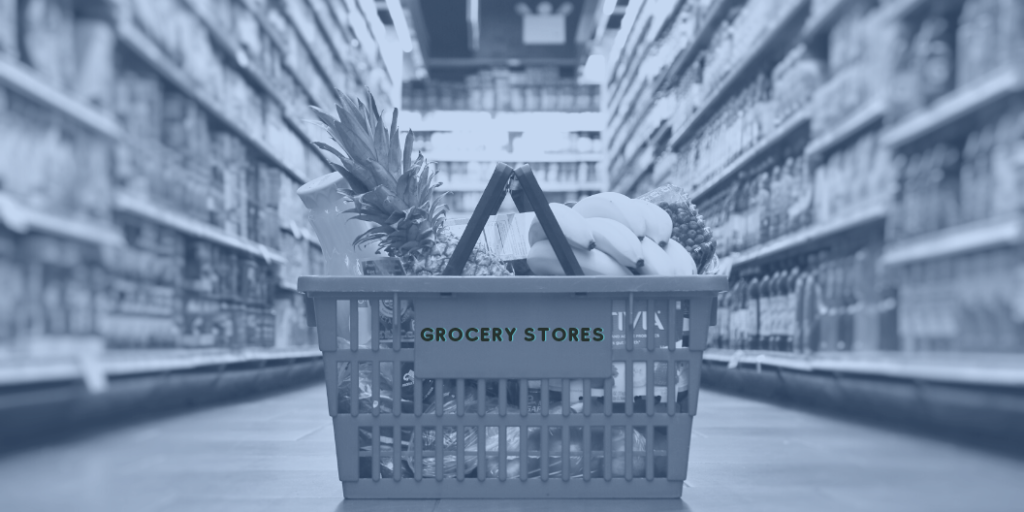Digitalization in the 21st century has presented disruptive forces to pricing which were not as strong or did not exist at all a couple of decades ago. These forces include rapidly decreasing marginal costs, higher price transparency, unprecedented access to customers and the widespread use of algorithms instead of humans to set prices.
Grocery stores today are under intense price pressure as a result of supply chain challenges, competition and rising costs. Knowing how to increase share of wallet among current customers and attract new customers has become critical to the survival of struggling grocers. A critical component of this process is instilling a favorable price-value image in the minds of consumers.
Most grocery stores seek to position themselves by providing either everyday low pricing (EDLP) over a wide variety of commodities or temporary price reductions (promotions) on a restricted number of items. The current economic environment coupled with constant shifts in consumer behavior make managing a healthy retail business difficult. The ability to react and adapt in real time is pivotal.
Implementing a pricing platform that supports and drives an agile and dynamic pricing methodology allows retailers to gain insights, make automated decisions and manage the pricing process in real time while fully aligning to business goals.
While traditionally Online grocery stores use more dynamic real-time pricing strategies compared to offline retailers, technology innovations such as pricing platforms and ESLs are driving more frequent price changes in offline stores. More retailers are pricing daily and even intradaily, especially on perishable items such as the dairy, bakery and produce. Applying an intradaily cadence to pricing allows retailers to unlock opportunities such as peak hours, end of day or last items maximizing yield and reducing waste. More about the trends in the fresh aisle below.
Have a question?
A successful pricing strategy starts with Product Classification
Product classification, also known as article segmentation, is at the core of a successful pricing strategy. Product classification breaks down the assortment and allows the application of different pricing strategies to different products. The methodology centers around categorizing the assortment into three separate groups that serve different purposes.
Key Value Items (KVIs) or Categories (KVCs) – essential products / Categories that drive store traffic and influence price perception. These products / Categories attract customers into the store, increasing the number of sessions (online) or daily visitors (offline). KVIs are usually priced competitively.
A six-pack of Coca Cola is an example of a grocery store KVI. It is a product with high unit sales whose price is familiar to consumers and drives their price perception. Customers use KVIs to classify retailers as ‘cheap’ in their mind. This then determines their willingness to shop there.
Volume Drivers – Once the customer is in store due to a competitive KVI offer, it’s time to build profitability. Volume drivers are the second stage in the customer journey. These products have high unit sales and can be found in many baskets. Their profitability is low yet better than KVIs. The goal of volume drivers is to recoup some of the customer acquisition cost from competitively priced KVIs.
In a grocery store, a 16-ounce pasta sauce is a volume driver. It is found in many baskets but is not a traffic driver and its price is less easily recalled than that of a six-pack of Coca Cola. It drives volume, but not price perception. While KVI price changes are correlated with the total amount of store traffic, volume drivers are not.
Profit Generators – The products in this group have high profitability and low sales volume. Customers regard these products as non-essential and their contribution to profit is higher than their contribution to revenue.
Unique types of flour such as chickpea or quinoa flour are examples of a grocery store profit drivers. They are specialty products that do not appear in many baskets and have higher pricing than the all-purpose essential varieties.
The structure of the product data (attributes and classifications) is critical for dynamic price optimization. The cleaner and more granular the data, the more effectively the pricing software can operate, and the more diverse the possible business cases become.
A grocery must also identify Product Family and Inter-Product Dependencies within the assortment, such as different sized packs (single vs. 6 pack / 60gr vs 80gr etc.) or branded vs. private label products(for example: private label needs to be 10% cheaper than leading brand).
Since consumers typically purchase more than one item at a time from a grocery store, demand relationships among products that appear in baskets play an essential role in determining how retailers set prices.
Profit Attribution can be implemented by Understanding demand relationships between items in a shopping basket. The loss on one item can be recouped on another item that is likely to appear in the same basket. A loss-leader such as a pumpkin at a discount for Halloween can be utilized to increase traffic, (in this case acting as a KVI), and offset by commensurate price increases on a complementary good, such as the tealight candles that go inside.
Due to the fact KVIs are priced competitively, common practice is to attribute profit proportionally, so that the KVIs receive their fair share of the overall basket profitability.
Adopting a high-low price strategy allows retailers to benefit from a broader range of promotions, discount giveaways, and loyalty programs that enhance price perception.
Done manually, the success of a loss leader strategy relies more on hope – customers buying items they wouldn’t have normally bought. In today’s data-driven world, where competition forces low-margin pricing in nearly every aisle, can grocery stores afford to rely on hope?
Grocery stores can Drive higher Sales by utilizing competitive Intelligence and tools to seize more opportunities to compete on price. The unsophisticated use of lower prices as a response to competitor pricing without fully understanding the impact and the motivation behind the price change is usually ineffective, especially in the long term.
Promotions are often heavily funded by vendors and as such, maximizing promotional outcomes can also maximize vendor funding, leading to strong, effective relationships with vendors. By determining winners, eliminating underperformers and identifying opportunities for brands to stand out, grocery stores can maximize promotional performance.
Leading trend for 2022-2023: The Fresh Aisle (Highly Perishable items)
A recent trend to increase the pricing frequency on fresh, highly perishable products such as fruit, vegetables and baked goods based on their intra-day performance is supported by the introduction of electronic shelf labels and the desire to become more green and reduce waste.
The fresh aisle is a great place for grocery stores to start showing ROI on their ESL deployment when utilizing the power of performance based pricing with a dynamic pricing platform. Introducing intradaily dynamic pricing to the fresh aisle will help align inventory with demand, increase yield and substantially reduce waste.
Grocery stores adopting dynamic prices practices are demonstrating that the traditional retail experience could slowly be transformed towards reflecting a more modern buying experience their consumers partake in every single day.
While dynamic pricing in grocery stores is not expected overnight, it is coming and retailers that will not have the right agile approach to pricing and the technology to manage complex and dynamic pricing strategies will be impaired.
Contact our team today to learn more.
The road to pricing excellence starts here







